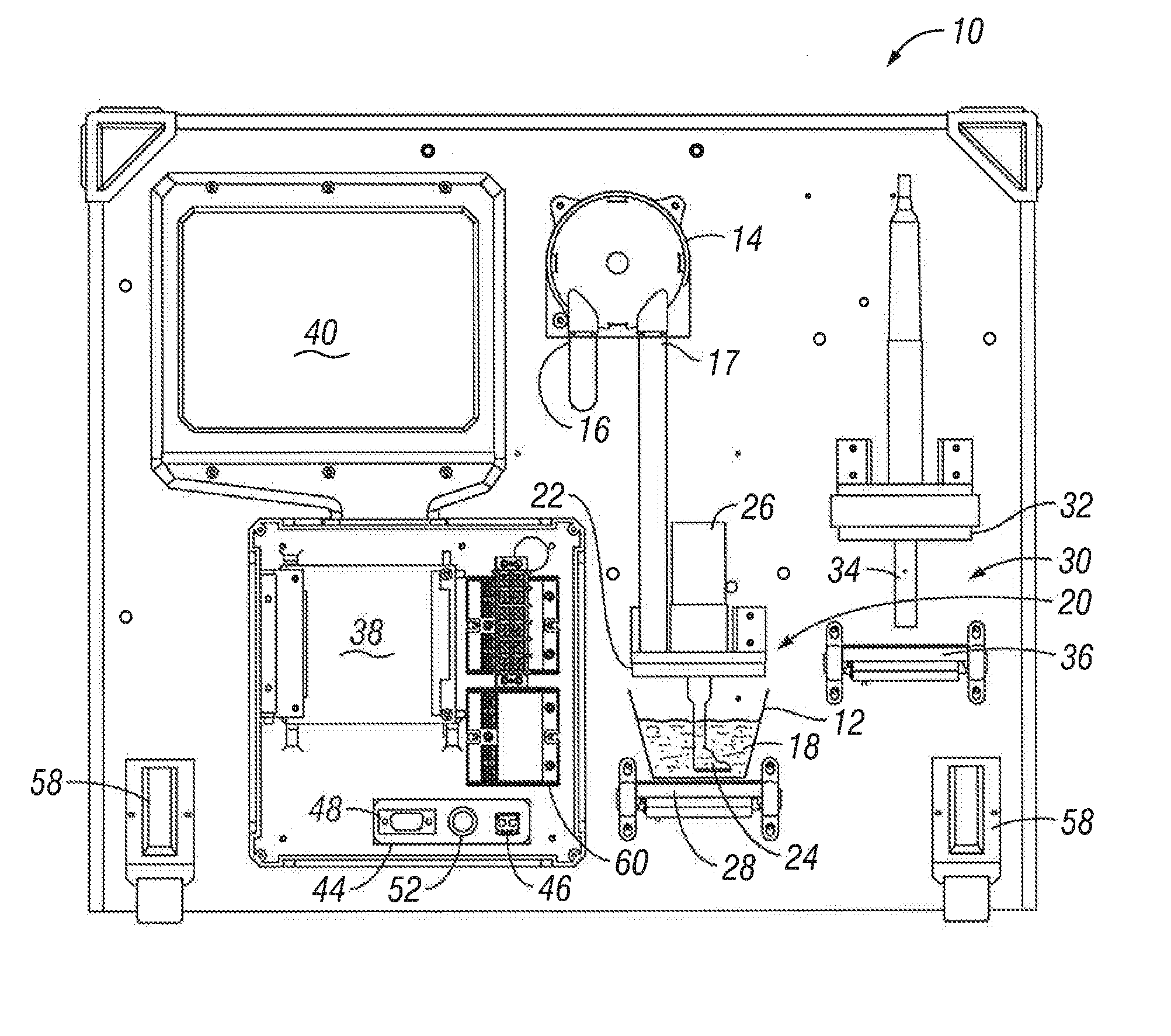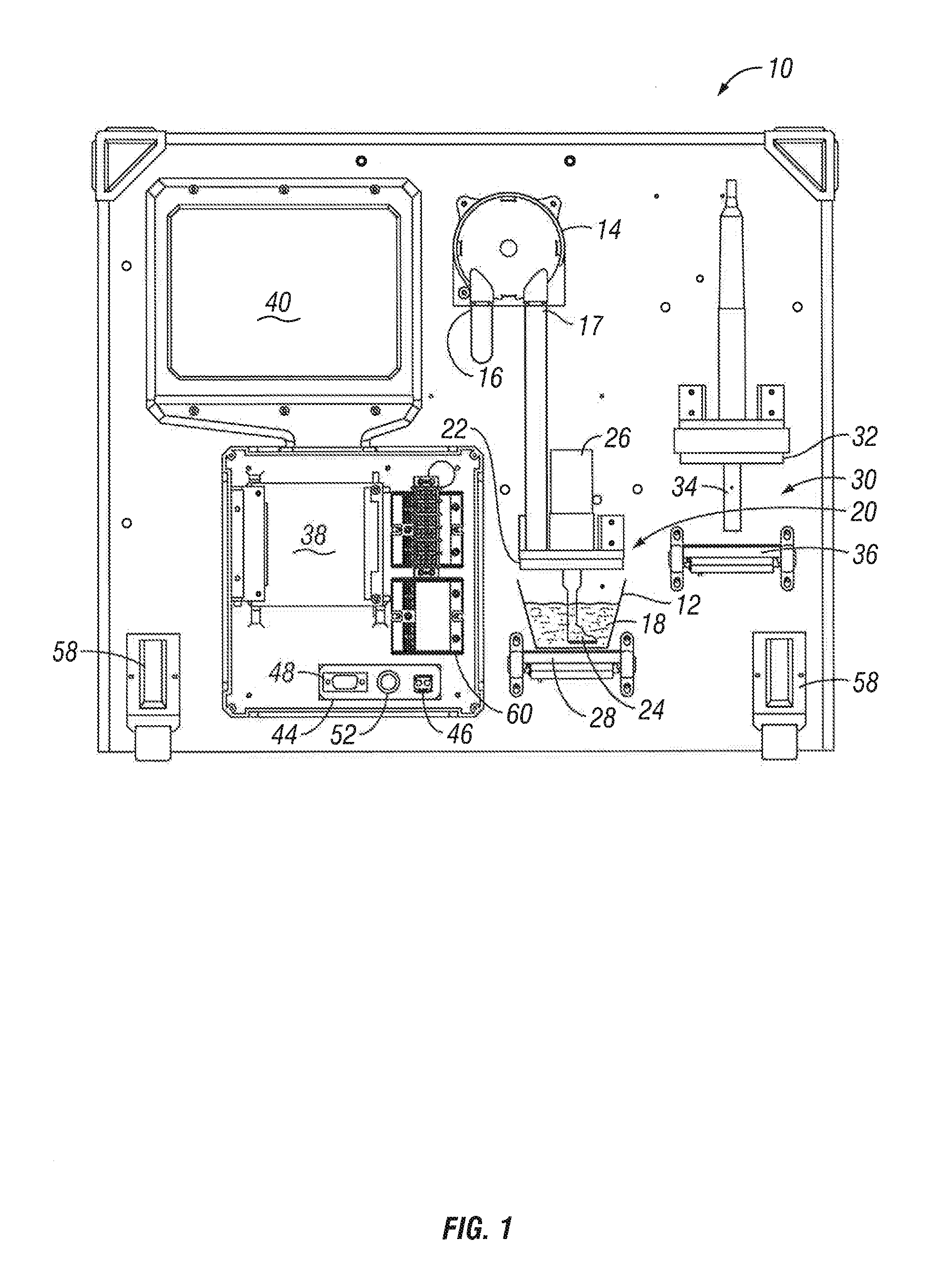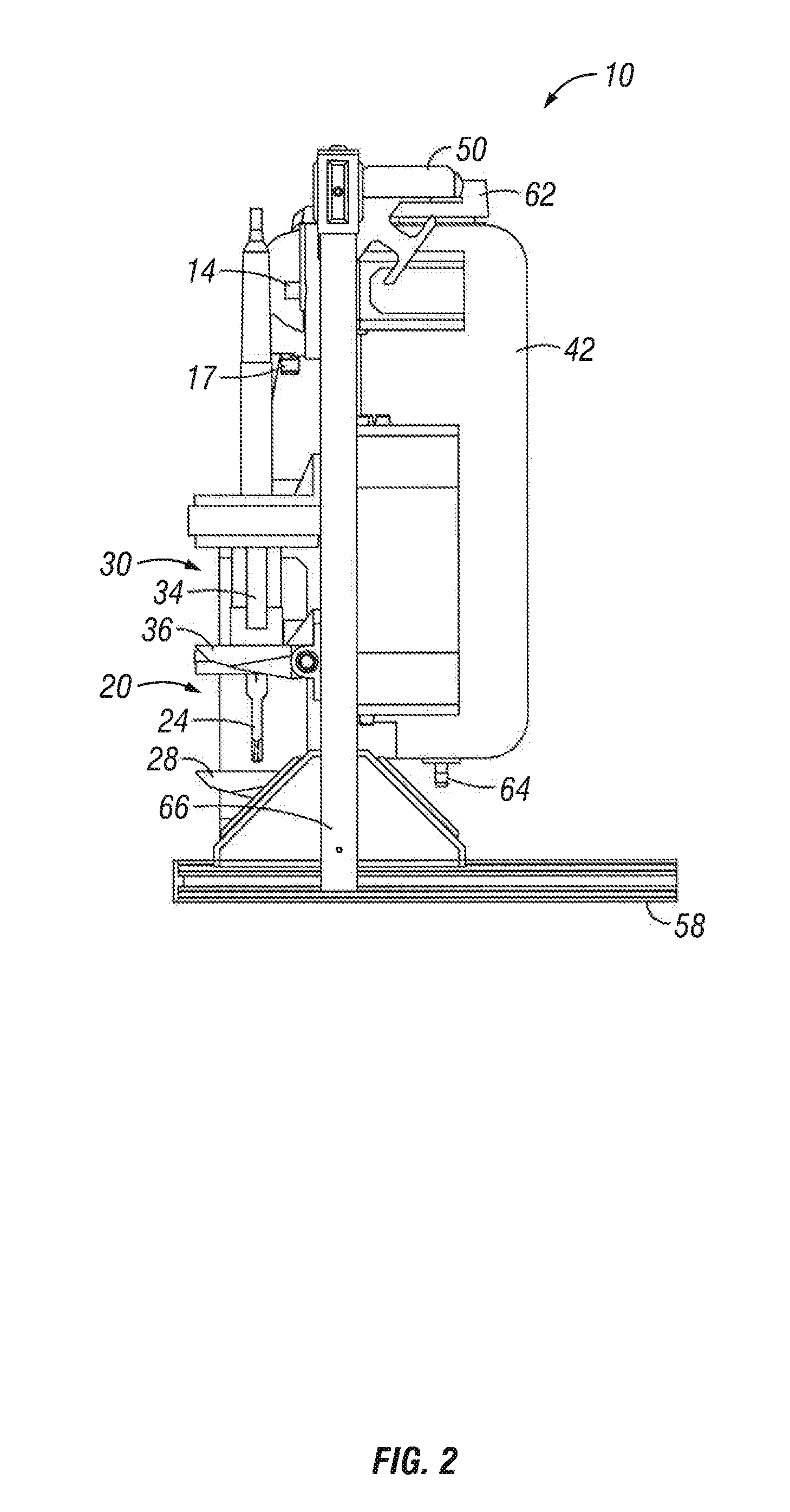Portable soil testing apparatus and method
a soil testing and portable technology, applied in the field of portable soil testing apparatus and methods, can solve the problems of difficult to obtain soil properties without use, difficult to use external laboratories for soil testing, and high cost of such machines, and achieve the effect of less expensive and easy use by farmers
- Summary
- Abstract
- Description
- Claims
- Application Information
AI Technical Summary
Benefits of technology
Problems solved by technology
Method used
Image
Examples
Embodiment Construction
[0022]Now referring to FIGS. 1-3, the reference 10 generally designates the apparatus for soil testing of the present invention. Initially, a soil sample is gathered and put into a cup 12, such as a disposable Dixie brand cup. Using a standardized disposable cup, such as the well-known 5 oz. Dixie brand cups, keeps the sample size to a minimum while also keeping the soil sample container at a low cost. The apparatus 10 preferably includes a pump 14, such as a peristaltic pump with an input 16 connected to the tank 42 by a hose and an outlet 17 that adds preferably deionized water into the cup 12 at the stirring station 20. A calibrated amount, such as 2 oz., can be added to ensure a general consistency of the soil sample slurry 18. The calibration can be adjusted by controlling the duration the pump 14 operates.
[0023]The cup 12 with the soil and water in it is placed into the soil stirring station 20. The soil stirring station 20 generally includes a cup support platform 28, a stirr...
PUM
| Property | Measurement | Unit |
|---|---|---|
| soil properties | aaaaa | aaaaa |
| soil property | aaaaa | aaaaa |
| weight | aaaaa | aaaaa |
Abstract
Description
Claims
Application Information
 Login to View More
Login to View More - R&D
- Intellectual Property
- Life Sciences
- Materials
- Tech Scout
- Unparalleled Data Quality
- Higher Quality Content
- 60% Fewer Hallucinations
Browse by: Latest US Patents, China's latest patents, Technical Efficacy Thesaurus, Application Domain, Technology Topic, Popular Technical Reports.
© 2025 PatSnap. All rights reserved.Legal|Privacy policy|Modern Slavery Act Transparency Statement|Sitemap|About US| Contact US: help@patsnap.com



